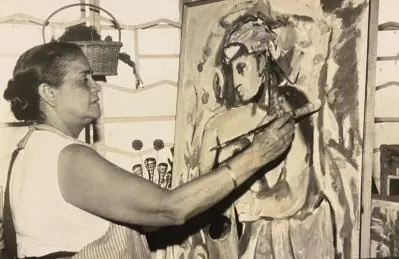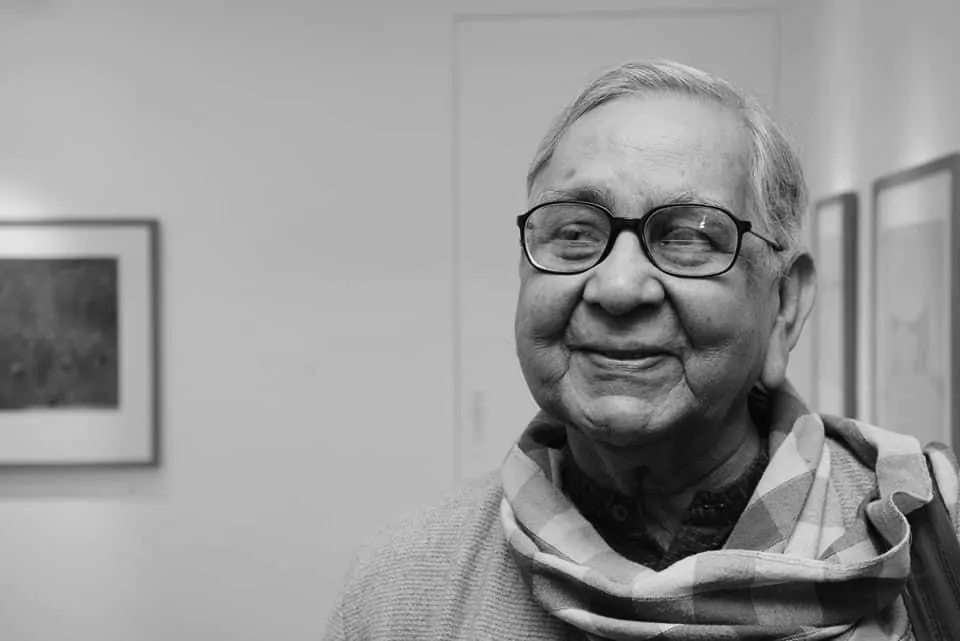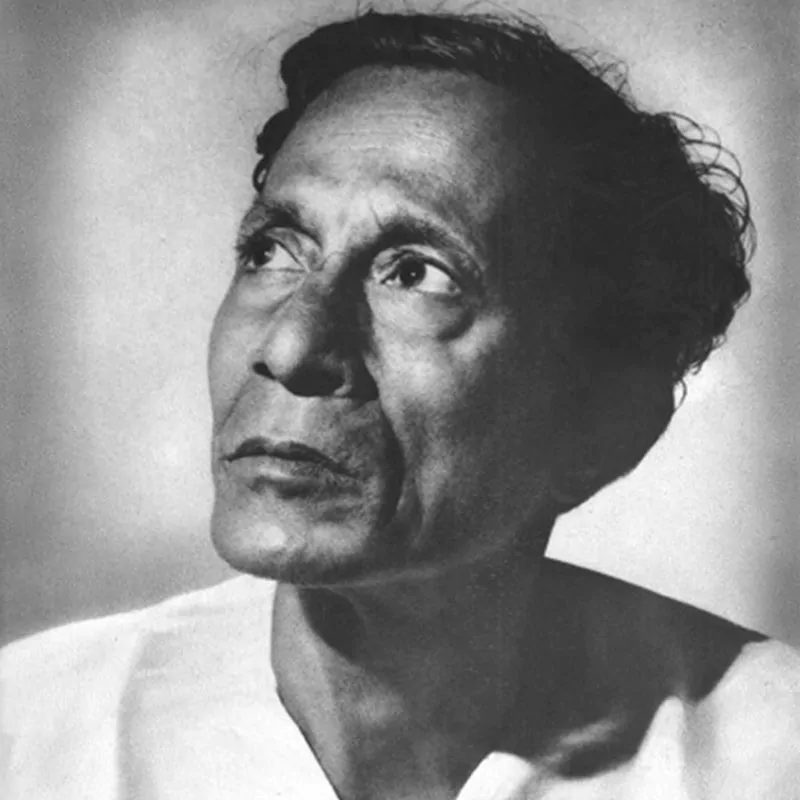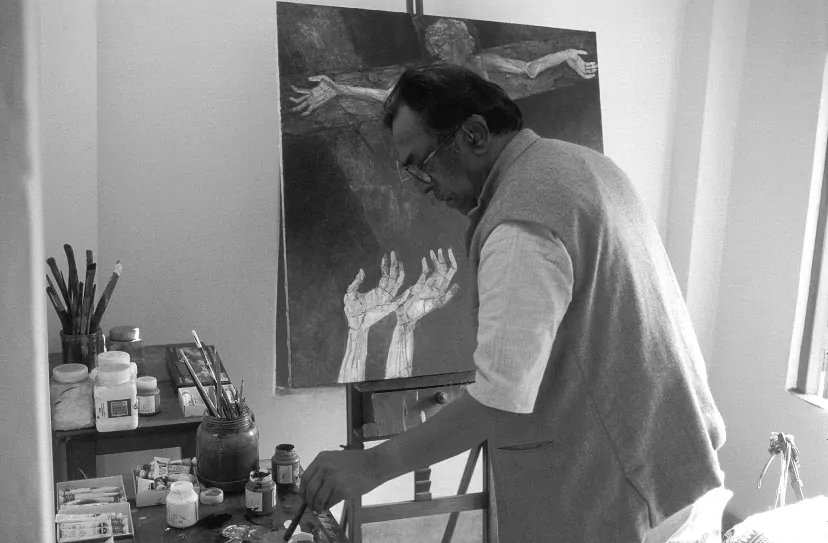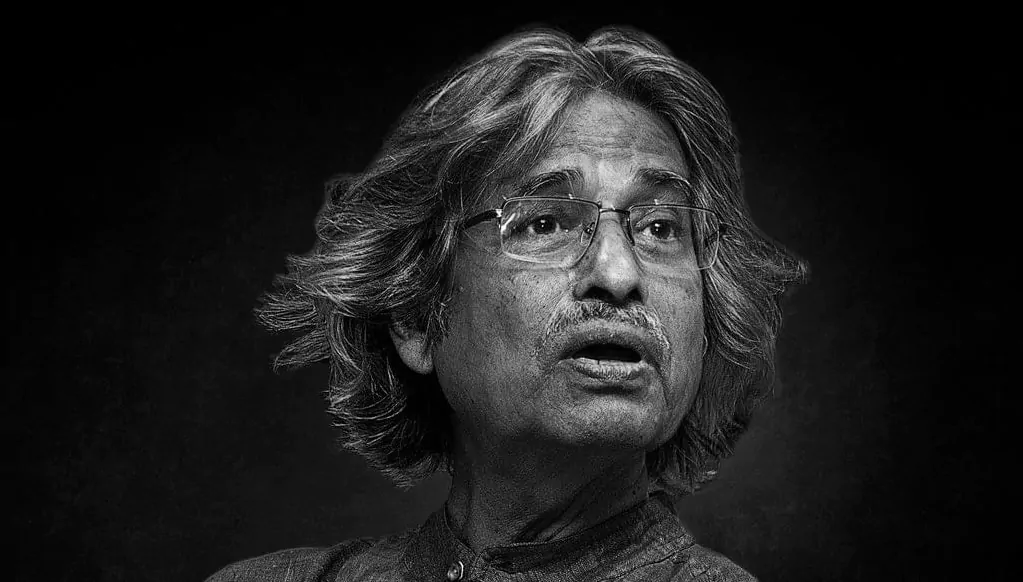The Majumdar Siblings.
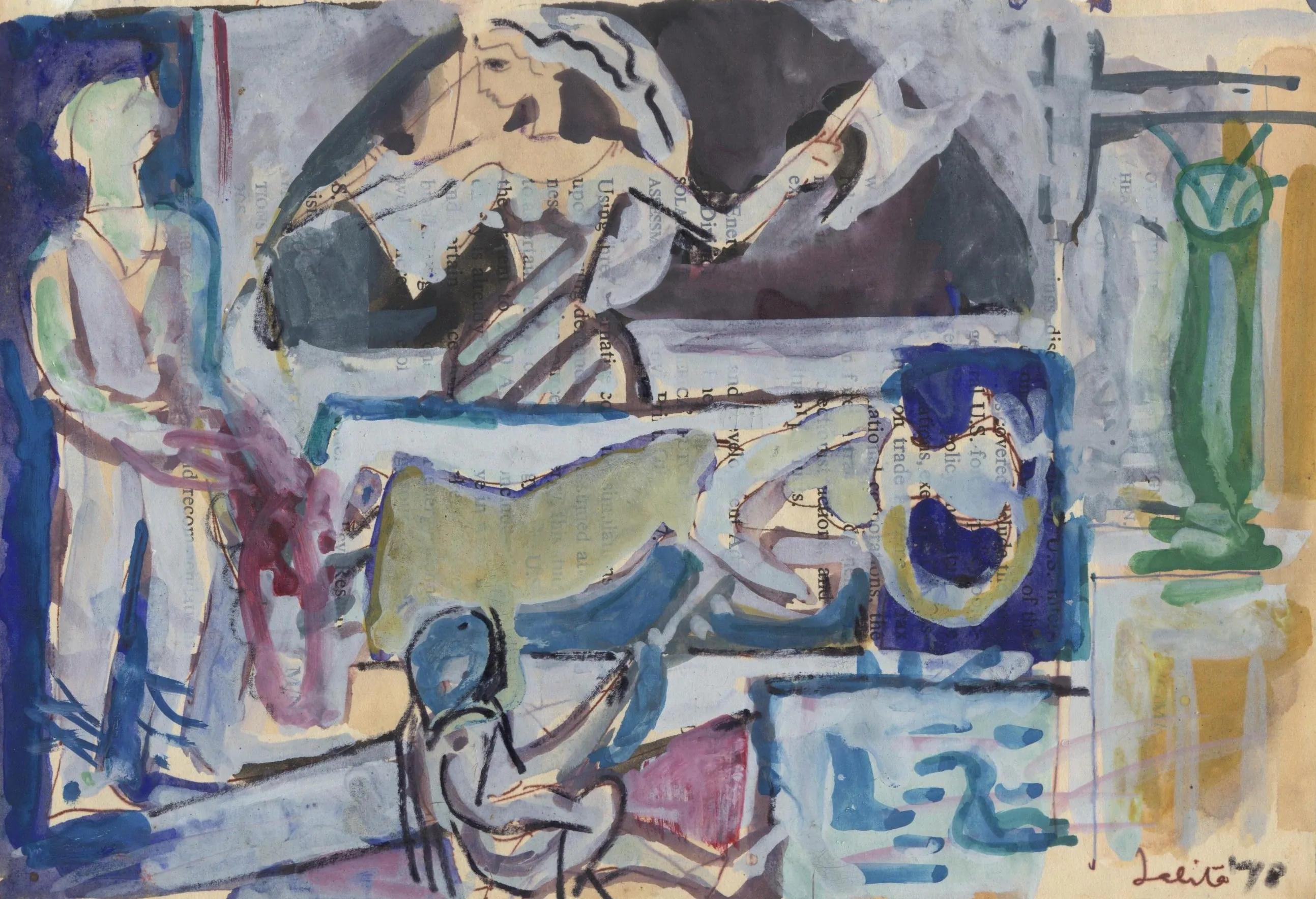
Kamal Kumar Majumdar (b.1914-1979), Nirode Mazumdar (1916-1982) and Shanu Lahiri (nee Majumdar,1928-2013) belonged to one of Calcutta’s most illustrious and artistic families. Born to make their mark, their parents Prafulla Chandra Majumdar and Renukamoyee Majumdar who hailed from Taki, encouraged each of their seven children to excel in their respective fields. Although they belonged to the same family, each of them were diverse in their creative output and outlook. Encouraged by their mother from a young age, the children were sent to the Jorasanko Thakurbari to see performances of nritya-natyas. Shanu Lahiri recalled in her memoirs that her mother took her along with her siblings to see plays on the Calcutta stage and witnessed the greats like Sisir Bhaduri and Ahindra Chowdhury. Poets, thespians, actors and writers like Vishmadev Chattopadhyay frequented their homes, the children learnt French and were exposed to Western and Eastern literature from a young age.It was amongst this atmosphere of dance, art, literature and poetry that the children grew up in. After the Tagore household at Jorasanko where each member was involved in the arts and went on to become pioneers, the Majumdar family can be seen through a similar prism where the children thrived in an atmosphere of intense creativity, growing up in a Calcutta that was at the heart of the cultural movement.
Amongst the siblings, Kamal Kumar Majumdar, Nirode Mazumdar and Shanu Lahiri made a distinct mark in the visual arts. On the other hand the other sisters Bani Majumdar (1918-1996) was a dancer of great repute who upon meeting Rabindranath Tagore at Santiniketan furthered her dancing skills and participated in several dance dramas written by Tagore, choreographed and directed by Shantidev Ghosh. In 1938 she toured the Continent with the Seraikella Chhau performers under the aegis of noted impresario Haren Ghosh. Incidentally she was the only woman dancer who was allowed to participate in the Seraikella Chhau performances. The other sister, Gita Majumdar(1922-1993) was a noted singer trained in the Lucknow Gharana.
Although Kamal Kumar Majumdar is know today as an erudite litterateur, his penchant for doodling and painting continued side-by-side with his writing. Regarded as one of the foremost writers of the mid-20th century who was known for his radical prose style who was equally deft with painting, wood-cuts and theatre. He remains a literary enigma and an equally popular school teacher attaining a cult status with the younger generations. Throughout his creative pursuits, Kamal Kumar Majumdar broke all archaic notions associated with Bengali art and culture and pursued an attempt to amalgamate the traditions with new age ideologies in his work.
Nirode Mazumdar on the other hand was a painter from the first generation of modernists and a founding member of ‘The Calcutta Group’ who initially trained at the Indian Society of Oriental Art in the Bengal School Style under Abanindranath Tagore. Following his training at the Indian Society Oriental Art he received the Norman Blout Memorial Award. Post World-War II, he travelled to France on a French Government Scholarship to study art in Paris in 1946. In Paris he studied and exhibited with the Ecole des Beaux-Arts and learnt art history along with 19th and 20th century painting at Ecole du Louvre. In addition he studied and worked in the studio of Andre Lhote. In 1949 he held his one-man show at Gallery Barbizon which was presented by the art critic Stanislas Fumet. In the same year, he visited Holland to learn in Utrecht, the technique of engraving which later would have a bearing on his art. He left France for England in 1951. There, he took part in exhibitions organized by the Indian High Commission in London, group shows, held at the India House and worked for some time as a curator of the art gallery there. It is actually in London that his new trend of thought takes shape.
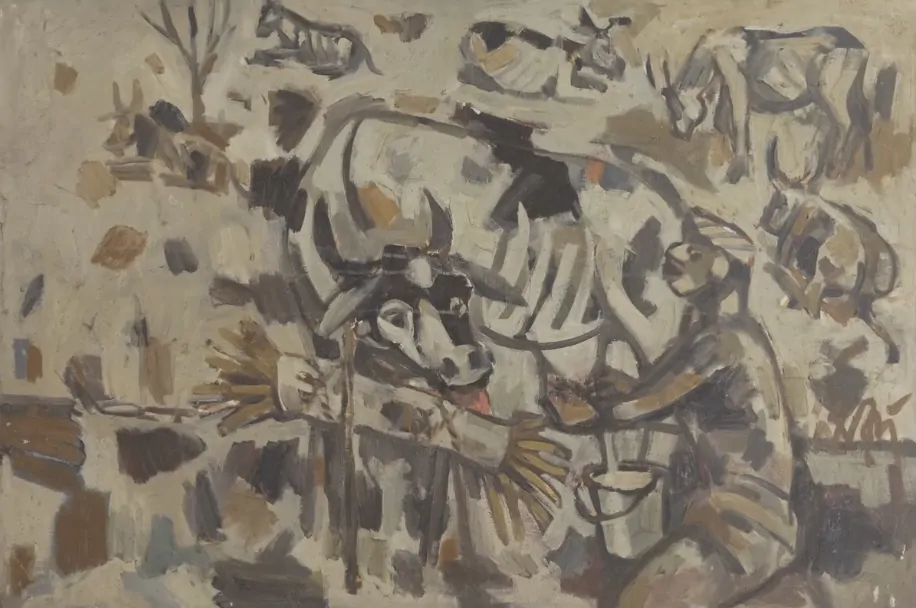
In 1955, he returned to France. Back in Paris, Nirode Mazumdar continued his pictorial research, at the same time, plunging into the oriental philosophies, mythologies, his cultural heritage, and, in 1957, exhibited a series of oil paintings "Images Ecloses" (Blooming Images) in his Paris studio, the fruit of his research and study. These were presented by Jeannine Auboyer, curator of Musee Guimet. This proved to be a turning point in his career. His experiences of living, working and studying in France and England and a close interaction with thinkers and artists like Braque, Brancusi and Jean Genet, contributed to deepening his fascination and understanding of the ‘sacred’ underpinnings of traditional art, regardless of the religion it grew out of. He was deeply interested in symbolism, ritualism and the element of sacred in the art practice. After spending eleven years in Europe, Nirode Mazumdar returned to Calcutta in 1958. From this time onwards, Nirode Mazumdar kept on working, searching, researching in pictorial, aesthetic, as well as philosophical domains. He painted large canvases. Gradually, he moved towards Tantric themes in his work, and often explored a single concept over a series of paintings. His work remained rooted in the pictorial tradition of Bengal, which he harmonized with European modernism. Along with his contemporaries in Bengal, he was involved in developing ‘Indian Modernism’ and for him it was intrinsically connected to these concepts.
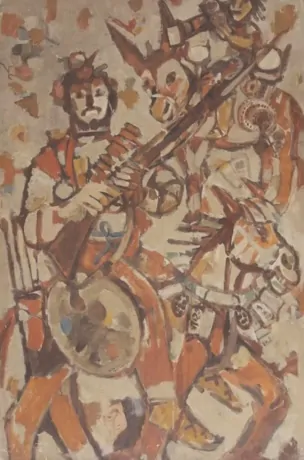
Shanu Lahiri, visual artist, poet, educator and raconteur, was a first generation modernist to emerge in post-colonial India. She received her initial training at The Government College of Art and Craft where she joined in the tumultuous year of India’s Independence in 1947 as one of the few women students under Atul Bose and Ramendranath Chakravorty who left a lasting impact on her. In 1951 she became the first student of the college to receive The President of India’s Gold Medal. She received her French Scholarship in 1956 and travelled to Paris. This enabled her to study and stay in Paris for a period of two years. Here she trained at the Ecole du Louvre where she studied art appreciation and art history. At the Academie Julian she learnt painting. Shanu Lahiri is remembered as an iconic artist and educator who remained an uncompromising force, pioneering and initiating public art projects in Calcutta and faraway places like Rwanda. She came up with innovative ways for making art accessible to the common man.

Retaining her primary commitment to painting and drawing, she tested new mediums and surfaces, experimenting at different phases of her life. A parallel rising urge for sculpture saw her move from small clay models and perfume bottles figures to cast in bronze. As one of Calcutta’s most prominent public artists, she was often dubbed as “the city’s first lady of public art” since her activist inclinations inspired her to mobilize the community into painting on the walls of the city to hide ugly graffiti smeared across the city’s walls. Not just a painter, she remained a voice of the city’s conscience. In 1983, Calcutta and an extent the country as a whole witnessed the formation of the first women’s artists group called ‘The Group’. The group consisted of five prominent painters and sculptors of the country namely- Karuna Shaha, Shanu Lahiri, Santosh Rohatgi-Moitra, Shyamasree Basu and the sculptor Meera Mukherjee. The artists were strong willed about the need for such a forum despite the many hurdles they encountered as most groups never featured any women artists. The artists of the group were clear-cut and unequivocal about the necessity for a group of women artists.
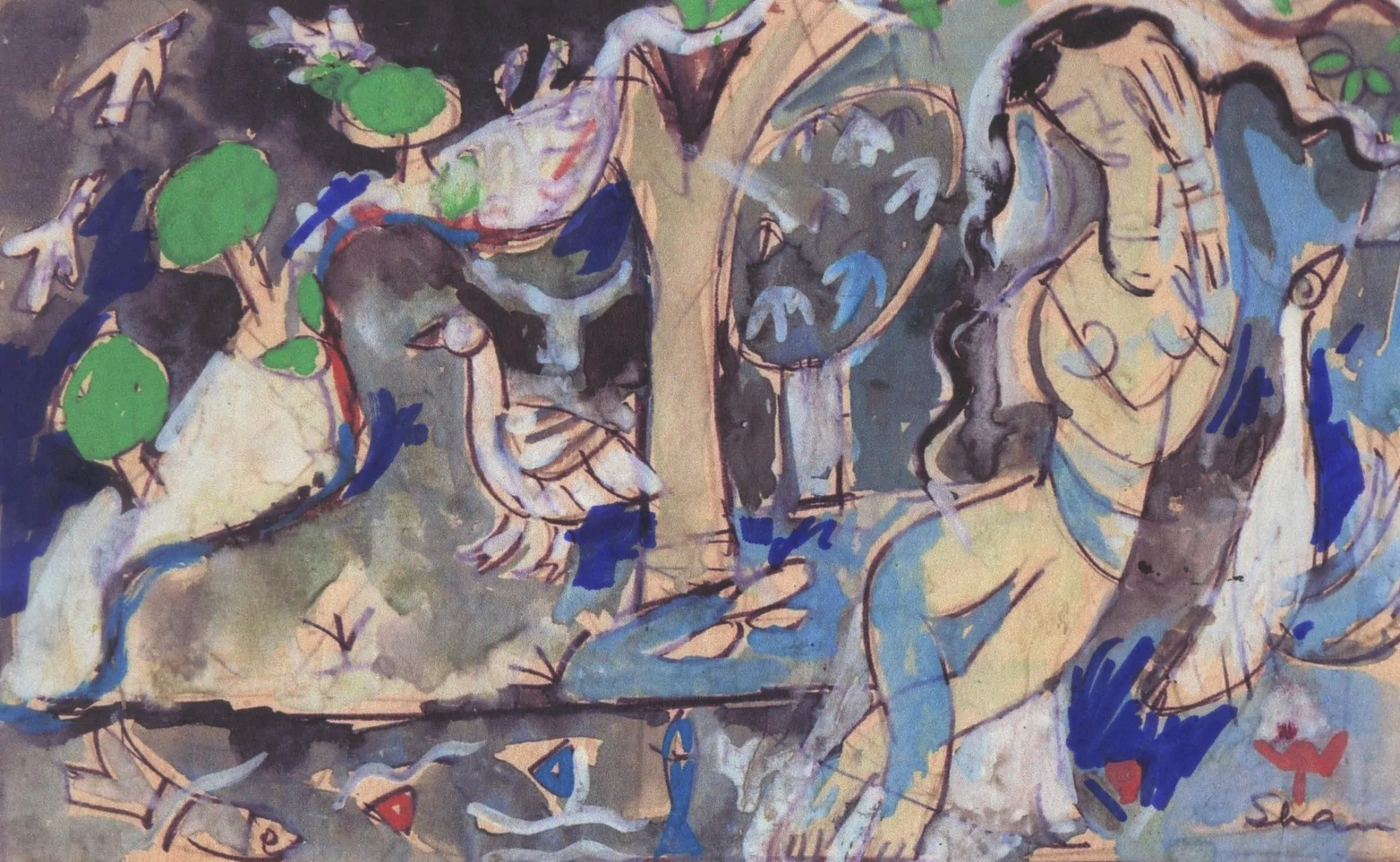
The artistic and literary genius of the siblings Kamal Kumar Majumdar, Nirode Mazumdar and Shanu Lahiri chronicle and mirror a variety of socio-political and cultural milestones in pre and post colonial India, especially in Bengal. The life and works of this family enable us to respond to the transitional nuances of the times- World War II, India’s ongoing freedom struggle, the Bengal Famine and cerebrate the residual sparks ignited by the Bengal Renaissance.
- Vinayak Pasricha.




